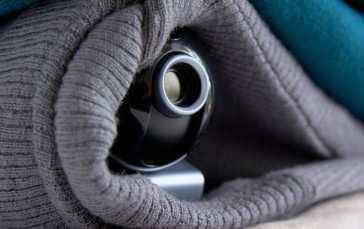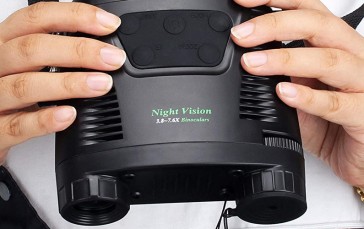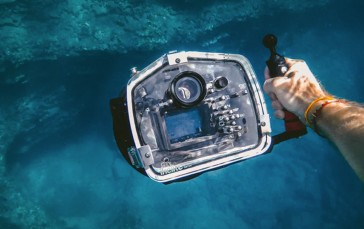Best Canon-Compatible Lenses In 2022
The digital world we live in has turned everyone into an amateur photographer, and smartphones are leading the way in this area. While the images we take with our smartphones are good, some people still prefer the higher quality and much clearer images produced by DSLR cameras.
A good quality camera is a fantastic way to capture all those special memories with family and friends, but the most critical part of the camera is the lens. A lens brings clarity and sharpness to photos that you just don’t see with ordinary cameras and certainly not with smartphones. A good camera features lenses that can be removed and replaced with different ones, depending on what pictures you want to take. We’ve put together a selection of the best Canon compatible lens for you to ensure every moment you capture with your Canon camera is picture-perfect.
The Best Canon-Compatible Lens
1Canon-Compatible CN-E 35mm T1.5 L F Cine Prime Lens

Take photographs and videos like a professional when you attach this Canon CN-E 35mm T1.5 L F Cine Prime Lens to your camera. This one is great for the Canon EOS C series of cameras but also works incredibly well with all Canon EOS HD-DSLRs. It features an EF Mount Prime that has been designed for Cine-Use and supports 4K Production. The lens barrel features 300 degrees of rotation with an 11-blade iris for smooth highlights. There are markings on both sides of the barrel so you can take note of specific settings (helpful when shooting video), and the entire lens is dust and water-resistant. Take perfect pictures with incredible sharpness and detail. It also makes an ideal gift for photography lovers.
For Canon C-Series and Full-Frame DSLRs
EF mount prime designed for cine-use
Supports 4K production consistent form factor
Lens barrel features 300 degrees of rotation
11-Blade Iris for smooth highlights
35mm focal length
- BrandCanon
- Model9139B001-IV
- Weight4.1 Pounds
Dust & water-resistant
Ideal for shooting video
No warranty
2Canon-Compatible EF 70-200mm f/2.8L IS III USM Lens
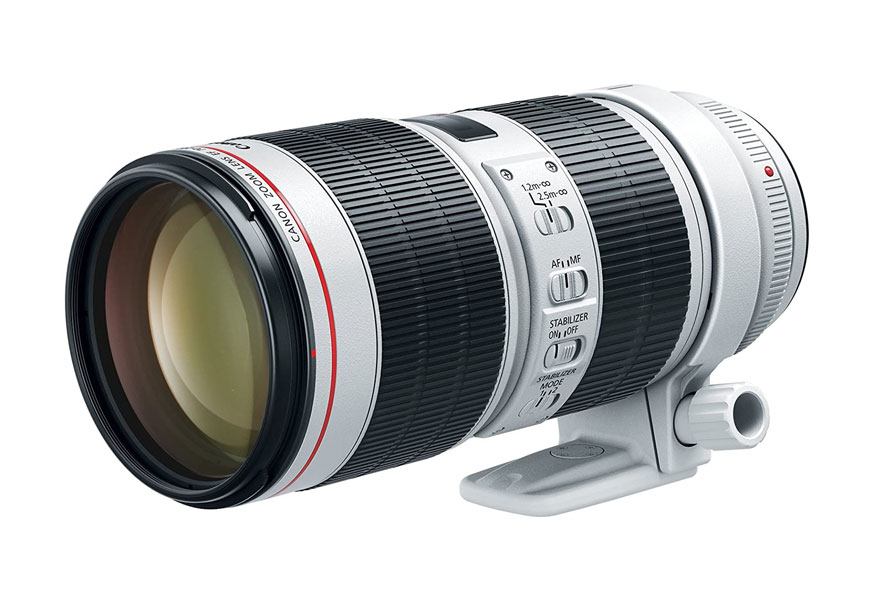
This Canon EF 70-200mm f/2.8L IS III USM Lens for Canon Digital SLR Cameras is an absolute winner. This Canon compatible lens has a maximum aperture of f/2.8 and a minimum focusing distance of 3.9ft. The inner focusing system with a Ring Ultrasonic Motor is almost silent, making this lens ideal for those who like to take wildlife photos. It also offers shake reduction for up to 3.5 shutter speed stops and provides you with outstanding clarity and performance. Dust and water-resistant, this Canon compatible lens will transform the way you take photos. For more amazing options for wildlife photos, check out our selection of the best trail cameras.
Maximum aperture of f/2.8
Dust and water-resistant
Optical image stabilization
Minimum focusing distance of 3.9 ft.
Inner focusing system with ring ultrasonic motor
Air Sphere coating (ASC) reduces ghosting and flaring
- BrandCanon
- Model3044C002
- Weight3.18 Pounds
Incredibly bright zoom lens
Fast and near-silent autofocus
Shake reduction for up to 3.5 shutter speed stops
Provides outstanding clarity and performance
Quite expensive
Weighty
3Canon-Compatible EF 24-70mm f/2.8L II USM Standard Zoom Lens
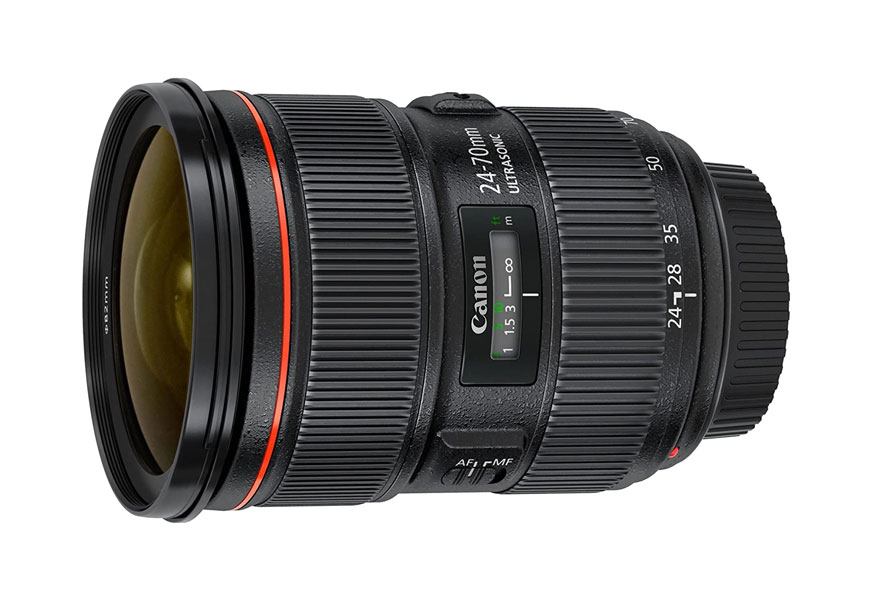
This is an all-around great Canon Camera Lens. Take stunning family photos, breathtaking landscapes, and cute kiddie shots. It features a focal length and maximum aperture of 24-70mm 1:2.8, with the closest focusing distance being 1.25 ft. This is a superior, all-round performance lens that has significantly reduced vignetting and distortion for perfect photos every time. You may also like some of the best waterproof cameras from our list, so check them out.
Focal length and maximum aperture: 24-70mm, 1:2.8
Lens construction: 18 elements in 13 groups
Diagonal angle of view: 84° – 34°
Inner-focusing with USM
Closest focusing distance: 0.38m/1.25 ft
Rotating type zoom system
- BrandCanon
- Model5175B002
- Weight1.77 Pounds
You can check compatibility before purchasing
Superior all-around performer
Significantly reduced vignetting and distortion
Expensive
4Canon-Compatible EF 50mm f/1.2 L USM Lens
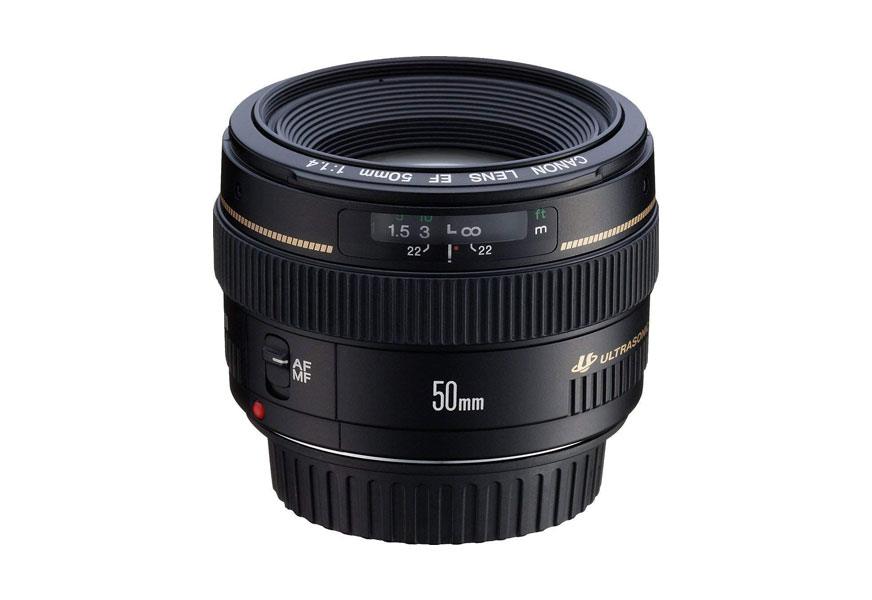
Capture those magical family moments with this Canon EF 50mm f/1.2 L USM Lens for Canon Digital SLR Cameras. This is a standard weather-resistant lens with AF full-time manual focus. It is optimized so that ghosting and flaring is minimized, and you get a superb image resolution and contrast. The closest focusing distance is 1.48 ft, and with the ultrasonic motor, you have a canon compatible lens that you will love to work with. Perfect for your Canon travel camera.
Weather-resistant standard lens
Focal length & maximum aperture-50mm F/1.2
Closest focusing distance – 1.48 ft
AF with full-time manual focus
Magnification – extension tube EF12 II
Ultrasonic motor (USM)
- BrandCanon
- Model1257B002
- Weight1.28 Pounds
Optimized to minimize ghosting and flare
Superb image resolution and contrast
Focusing can be tricky
5Canon-Compatible EF 16-35mm f/4L IS USM Lens – 9518B002

This Canon lens is relatively easy to use, making it ideal for beginners or those who don’t like to fiddle too much with focusing just to get a quick shot. The Canon EF 16-35mm f/4L IS USM Lens produces beautifully sharp images. The ultra-wide zoom lens is perfect for landscapes, so you’ll want to take your camera and this lens with you whenever you travel. It’s also lightweight, so you won’t feel like you’re trying to perform a balancing act just to angle your camera and take that perfect pic. Be sure to also check out our guide to the best hidden cameras for more cool products for photography lovers.
Focal length & maximum aperture: 16–35mm 1:4.0
Lens construction: 16 elements in 12 groups
Diagonal angle of view: 108°10′ – 63°
Focus adjustment: inner focus system
Closest focusing distance: 0.92 ft. / 0.28m
- BrandCanon
- Model9518B002
- Weight1.36 Pounds
Produces beautifully sharp images
Ultra-wide zoom lens is perfect for landscapes
Lightweight
Can be slow to focus
6Sigma 150-600mm 5-6.3 Contemporary DG OS HSM Lens

Not all Canon compatible lenses need to carry the Canon label, and this Sigma 150-600mm 5-6.3 Contemporary DG OS HSM Lens for Canon cameras is proof of that. This camera lens is lightweight and compact for improved usability, with a minimum focusing distance of 110.2 inches. It also features a USB dock for complete customization, and you’ll love the hypersonic motor and the optical stabilizer. The 600mm maximum focal length can images at an extreme distance. Our guide to the top instant cameras features more quality products you may like, so check them out.
Lightweight and compact for higher usability
Water and oil-repellent coating on front glass element
Minimum focusing distance: 280 cm/110.2 inches
USB Dock Compatibility
Hyper Sonic Motor (HSM) & Optical Stabilizer (OS)
- BrandSigma
- Model745101
- Weight4.25 Pounds
Dustproof and splash-proof mount
Zoom can handle any long-reach photography
USB dock allows for maximum customization
Vibration control a little unstable
7Canon EF 100mm f/2.8L IS USM Macro Lens

This Canon EF 100mm f/2.8L IS USM Macro Lens for Canon Digital SLR Cameras will help to take beautiful photos with crystal clear details and flattering close up portrait shots without distortion. The near-silent Ultrasonic focusing is perfect for wildlife photographers and ideal for travelers as well. This is a prime lens with macro capabilities with a macro magnification of 1:1. It also gives you a 23.4-degree angle of view, so it’s ideal for capturing family memories as well.
Prime lens with excellent macro capabilities
Macro magnification ratio of 1:1
Lens construction consists of 15 elements in 12 groups
23.4-Degree diagonal angle of view
100mm lens with f2.8 aperture
Compatible with 67mm filters
- BrandCanon
- Model3554B002
- Weight1.38 Pounds
Near-silent Ultrasonic focusing
Beautiful photos with crystal clear details
Takes flattering portraits without distortion
Autofocus not always ideal
Cannot be used with extender lenses
8Canon EF 17-40mm f/4L USM Ultra Wide Angle Zoom Lens

This Canon EF 17-40mm f/4L USM Ultra Wide Angle Zoom Lens is a 17-40 mm ultra-wide-angle zoom lens with superior optics from 3 aspherical lens elements. It features a powerful ring-type ultrasonic motor with a diagonal angle of view at 104° 57° 30′. This Canon compatible lens is ideal for both film and digital cameras, and with fast and silent autofocusing, it is perfect for nature and wildlife photography. It is also perfect for those once in a lifetime family occasions like weddings, birthdays, and other special moments where you need to capture a large group of people all in one shot. You may also be interested in some of the best mirrorless cameras from our list, so be sure to check them out.
17-40mm Ultra-wide-angle zoom lens
Superior optics by 3 Aspherical lens elements
Closest focusing distance: 0.9 feet
Powerful ring-type ultra-sonic monitor (USM)
Diagonal angle of view 104° 57° 30′
Water and Dust Resistant
- BrandCanon
- Model8806A002
- Weight1.1 Pounds
Ideal for both film and digital SLRs
Fast and silent autofocusing
Perfect for wedding and nature photography
Images produced may lack sharpness
9Canon EF 50mm f/1.4 USM Standard & Medium Telephoto Lens

For the budding family photographer, this Canon EF 50mm f/1.4 USM Standard & Medium Telephoto Lens is a well-priced lens to start off a collection. This is a standard focal length 50 mm lens with a minimum focusing distance of 17.8 inches. It features an ultrasonic autofocus motor as well as a hypersonic motor that ensures silent, high-speed autofocusing, making it perfect for taking photos of nature and sporting events when you want to catch action shots. The multi-layer coating minimizes flare and ghosting, which is a common issue with digital cameras. This canon compatible lens is ideal for many photographic situations, but the real magic happens when you point the camera at those action shots. Our guide to the best tripods features some useful accessories for photographers, so take a moment to check them out.
For Canon c-series and full-frame DSLRs
EF mount prime designed for cine-ise
Supports 4K production consistent form factor
Lens barrel features 300 degrees of rotation
11-blade iris for smooth highlights
35mm focal length
- BrandCanon
- Model2515A003
- Weight10.2 Ounces
Dust & water-resistant
No warranty
Canon-Compatible Lens Buying Guide & FAQ
Sorting Through The Lens Lingo
Have you ever listened to a photographer taking about lenses and wondered at the lingo they use? We’ve put together some of the most common phrases and words you need to understand to make an intelligent lense choice.
Maximum Aperture – This refers to the amount of light that the lens can gather. You’ll usually see these specifications displayed as f/2.8, F2.8, or 1:2.8. ns. The lower the aperture number, the more light the lens can gather.
Some lenses, such as zoom lenses, have a variable maximum aperture, which can change depending on the focal length. With maximum apertures that are variable, you’ll see this specification displayed as F3.5-5.6 or something similar.
Focal Length – This is shown in millimeters, and the higher the number, the bigger the zoom. A shorter focal length is usually better for wider shots. If the camera lens has a focal length with two numbers, for example, 24-80mm, then it is a zoom lens. A single number refers to a prime lens.
Lens Mount – The part of the camera a lens attaches to is called a lens mount. Many camera manufacturers make these lenses with proprietary mounts, which means you will only ever be able to purchase their lenses for your camera. Some will even make different lens mounts for different series of cameras, so it is crucial that you check the compatibility of your lens to ensure it can be mounted to your camera.
Format – Along with the lens mount of your camera, you must ensure that the lens is capable of producing an image large enough to cover the image sensor. Different cameras utilize different sized sensors and manufacturers produce different lenses to work with these different types of cameras.

Different Types of Lenses
There are different types of lenses available for the photography enthusiast, and they generally fall under these categories:
Standard – This is the most basic of all camera lenses and is usually the lens that comes with a camera when you first make your purchase. As the name suggests, this is a normal, everyday type of lens that is used for most types of photography. Many standard lenses have zoom capabilities, which is why they are so versatile and practical for beginners.
Wide Angle – These lenses are usually available as prime or zoom lenses and have a focal length between 24 and 35 mm. These offer a wide field of view and can magnify the distance between subjects in the background and the foreground. Wide-angle lenses are great for landscape photography, photographing mass group events, or taking pictures of large buildings or other immense objects.
Ultra-Wide Angle – These lenses are considered to be specialty lenses and are popular for use in architecture and interior design. You can creatively alter the distortion and highlight the main subject in a number of artistic ways. Ultra-wide-angle lenses have a focal length of 24 mm or less, which means they can capture a wider scene than other lenses. Sometimes these lenses are called "fish-eye" lenses because of the distortion they produce.
Telephoto – These lenses have a focal length that exceeds 70mm, and some may even go as high as 400mm. They have a narrow field of view, which makes them perfect for focusing on a specific subject or those at a considerable distance. Telephoto lenses are popular for wildlife photographers as it allows them to take close-ups without getting up close and personal with a wild beast. These are also the best lenses for sporting events when you need to keep yourself at ta distance.
Superzoom – If you want a lens that can take any photo in crystal sharp detail, then a superzoom lens is your best bet. Superzoom lenses can cover almost any focal length from wide to telephoto. These are popular choices for people who need to switch from one focal length to another in the shortest amount of time possible or for those who don’t want to take a bag full of lenses with them on a photoshoot.
Macro – A macro lens is one of the most specific types of lenses available for cameras. These are great for those extreme close up shots and have a focal length of anything between 40 – 200mm. Macro lenses are the best when you want superior image sharpness, but keep in mind that the depth of field is shallow. The subject could be a single tiny flower or an insect that will take up almost the entire field with every minute detail clearly visible, but the background will be blurry.
Factors To Consider When Buying A Canon-Compatible Lens
Price – Some of the prices of Canon Compatible Lenses will have you grabbing your head in despair. These can truly reach astronomical price tags, so unless you have a bulging bank account or you’re a professional photographer, you may be better off looking at less expensive camera lenses.
Size – The camera lens that usually comes with your new camera is most likely small. However, some camera lenses are enormous and are often considerably larger than the camera. If you’ve ever watched a football match on TV, you’ve probably seen a group of photographers on the sidelines somewhere with huge lenses pointing at the field. These lenses often come with a stand for stability. These lenses are at the extreme end when it comes to size, but even beginner lenses can range from small to quite large. Size doesn’t matter all that much unless you want to take specific types of photos.
Weight– As a general rule, when it comes to camera lenses, the bigger lenses are also the heaviest. This may be fine if you only need to carry your camera and the rest of your equipment for a short distance, but a very large lens is going to be quite heavy so may not be suitable for something like nature or wildlife photography where you may frequently find yourself moving during the shoot.
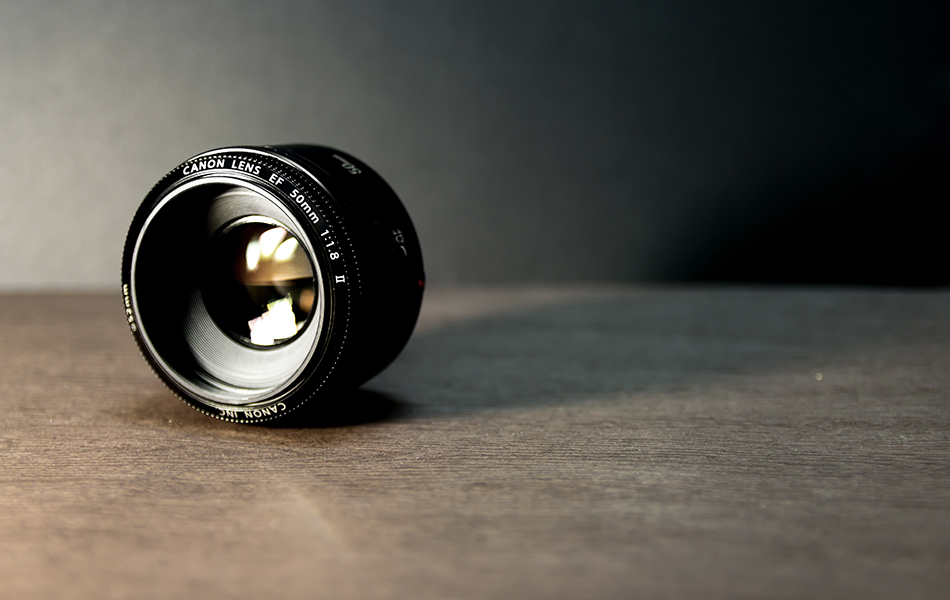
Canon-Compatible Lens FAQ
Q: How does a camera lens work?
A: Light reflects off of every object around us, and this light can also be transmitted into another object and captured. This type of object is a lens. A lens takes in the light and colors bouncing from objects and projects them onto the sensor at the back of the camera.
Q: Why does a photographer need more than one camera lens?
A: The main reason a photographer needs more than one camera lens is that they need to take a variety of different photographs from different angles, distances, and even action photos where the subject is in motion. This means the lenses need to be different sizes and have the ability to capture subjects in different lighting, distances, and with different effects.
Before you rush out to buy a Canon compatible lens for your camera, make a list of what you intend to take pictures of and get a lens that will facilitate your needs. Camera lenses can be quite expensive, so the last thing you want is to have a costly piece of equipment just sitting in your equipment case doing nothing. It’s often better to get a Canon compatible lens that can cover a multitude of different types of photography.
